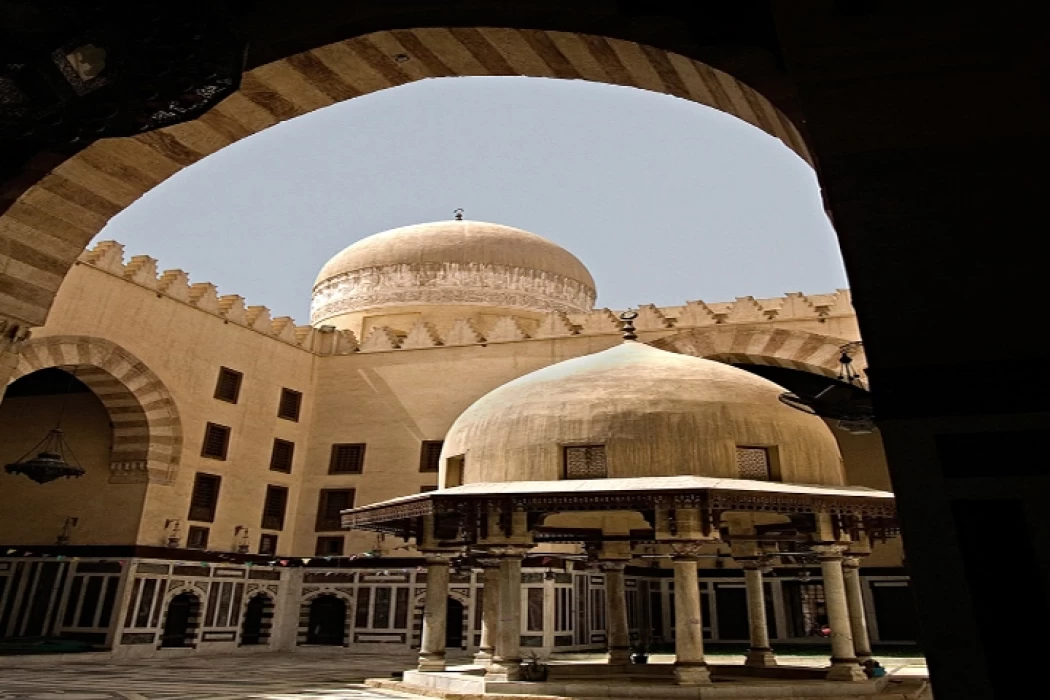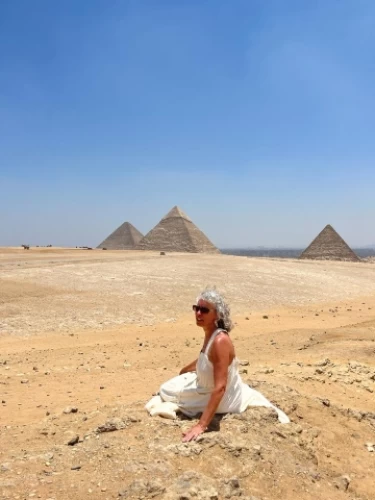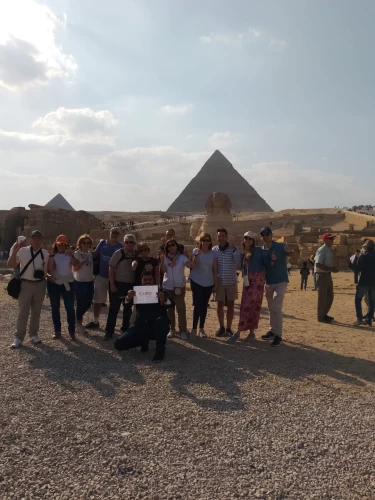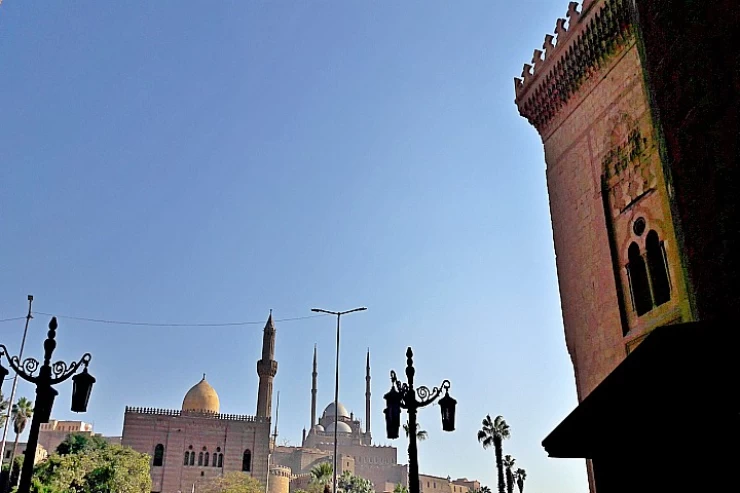
Madrasa and Mosque of Amir Sarghatmish
Madrasa, Mosque of Amir Sarghatmish, was built by Prince Seif al-Din Sarghtammish al-Nasiri, in 757 AH / 1356 AD. He is one of the princes of the Mamluk Sultan Al-Nasir Muhammad bin Qalawun. It is located on Al-Khudairi Street, along Al-Saliba Street in the Sayyida Zainab neighborhood in old Cairo.
the mosques of Islamic Egypt are indispensable places that have to be covered by cruise passengers that dock in the various Egyptian ports our Egypt shore excursions can take you to spend quality time in Cairo during Excursions From Sokhna port or even if you only stop in another port we can make it from Port Said shore excursions
The mosque is adjacent to the northwestern side of Ibn Tulun Mosque, which is considered the most beautiful minaret in Cairo.
The school was built on the ruins of buildings that were located within the boundaries of the city of Al-Qata’i Tulunideh.
It was built elegantly and has patterns of inlaid stones. Prince Sargatmish designated this school to teach modern jurisprudence according to the Hanafi school of thought. Therefore, the school became a home for the most famous scholars of the Hanafi school, especially the Persians.
This school consists of a middle open courtyard, in the middle is a fountain with a wooden dome carried on eight marble columns that were used as a place for ablution. The Qiblah or the direction of the Kaaba, is the mihrab, the oldest Cairo dome based on a mihrab.
This wall is decorated with white marble panels with medallions carved in them, but these panels have been removed and are now in the Islamic Museum. Then it is followed in terms of the area by the iwan opposite it (northwest) and then the two side iwans.

Museum of Islamic Art
The minaret of the mosque consists of three layers, the first and second floors are octagonal in shape, and the third floor consists of marble columns with a carved dome, 40 m above the ground and 24.60 m above the surface of the mosque, and the minaret is located to the left of the entrance.
The dome above the mausoleum is clearly visible.
The bizarre, bivalve dome is made of bricks that form an unconventionally high cylinder, showing a circular shape that is a distinctive shape not uncommon in Egyptian buildings. The floor of the school rises from the level of the entrance and therefore there is a five-step staircase that leads to the courtyard. This school has special architectural features in which Persian influences appear, especially the Samarkandian domes, which have long necks. From this school in the position now occupied by Al-Ghouri Agency.
The mosque and school of Prince Sargatmish still retain their ancient splendor and beauty, but the mosque needs more attention and reform. The marble that adorns the walls of the courtyard of the mosque suffers from neglect, and some of the marble is about to fall, despite the recent repairs in the mosque.
The danger that threatens the mosque also is the sewage that collects from the buildings and dwellings adjacent to the mosque, despite the fact that the Antiquities Authority has created a new system for the disposal of sewage, the water is returned and collected a year after the completion of the repairs and renovations in the Ibn Tulun Mosque area.
This water accumulates every day in large quantities, to the extent that a palm tree has grown in the outer wall of the mosque.
Some important personalities were buried in the school, such as Prince Sargatmush who is buried in the dome inside the school, as well as his son Ibrahim and the scholar Qawam al-Din al-Atqani.
Latest Articles
Admin
Seabourn Sojourn Cruise Stops in Safaga Port
The Seabourn Sojourn, the flagship vessel of Seabourn Cruise Line's ultra-luxury fleet, was built in 2008 at the T. Mariotti shipyard in Genoa, Italy. Measuring 198 metres, it can accommodate up to 450 guests in its 225 spacious all-suite staterooms.
Admin
Norwegian Sky Cruise Stops in Safaga Port
Norwegian Cruise Line operates a cruise ship called the Norwegian Sky. It was constructed in 1999 and can accommodate 2,004 passengers in addition to 878 crew members. The ship has several dining establishments, lounges and bars, a spa and fitness center, swimming pools, and a number of entertainment areas.
Admin
Explora II Cruise Stops in Safaga Port
Explora II, the second vessel in the Explora Journeys fleet, sets sail in 2024 to redefine luxury cruising. With 461 ocean-front suites, 9 culinary experiences, and 4 pools, this haven of sophistication and sustainability promises an unforgettable "Ocean State of Mind" journey to inspiring destinations.
Admin
Mein Schiff 6 Cruise Stops in Safaga Port
The Mein Schiff 6 is the latest cruise ship in the renowned TUI Cruises fleet, offering passengers a luxurious and sophisticated cruise experience. At 315 metres long, this floating resort features a range of dining options, entertainment, and recreational facilities, including a spa, fitness centre, and sports amenities.
Admin
Mein Schiff 4 Cruise Stops in Safaga Port
When the Mein Schiff 4 cruise ship docks in Safaga, Egypt, passengers are granted access to a realm of ancient wonders. Aboard this state-of-the-art vessel, guests can embark on meticulously curated shore excursions that showcase the region's most iconic landmarks, including the Giza Pyramids, the enigmatic Sphinx, and the remarkable tombs and temples of the Valley of the Kings in Luxor.
Admin
MS Europa Cruise Stops in Safaga Port
The Silver Moon, Silversea's latest flagship, is a luxury cruise ship that offers an exceptional travel experience for Venezuelans exploring Egypt. With a capacity of 596 guests and an impressive 40,700 gross tonnes, the Silver Moon maintains the small-ship intimacy and spacious all-suite accommodations that are the hallmarks of the Silversea brand.
















